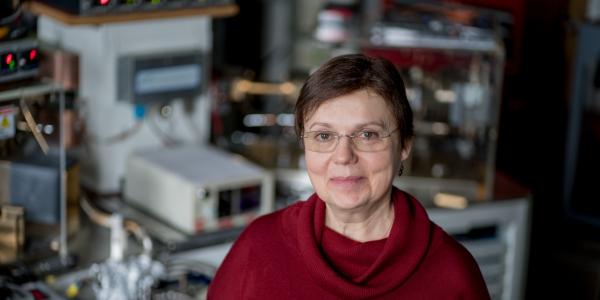An unusual chunk in a meteorite may contain a surprising bit of space history, based on new research from Washington University in St. Louis.
Presolar grains — tiny bits of solid interstellar material formed before the sun was born — are sometimes found in primitive meteorites. But a new analysis reveals evidence of presolar grains in part of a meteorite where they are not expected to be found.
“What is surprising is the fact that presolar grains are present,” said Olga Pravdivtseva, research associate professor of physics in Arts & Sciences and lead author of a new paper in Nature Astronomy. “Following our current understanding of solar system formation, presolar grains could not survive in the environment where these inclusions are formed.”
Curious Marie is a notable example of an “inclusion,” or a chunk within a meteorite, called a calcium-aluminum-rich inclusion (CAI). These objects, some of the first to have condensed in the solar nebula, help cosmochemists define the age of the solar system. This particular chunk of meteorite — from the collection of the Robert A. Pritzker Center for Meteoritics and Polar Studies at the Chicago Field Museum — was in the news once before, when scientists from the University of Chicago gave it its name to honor chemist Marie Curie.
For the new work, Pravdivtseva and her co-authors, including Sachiko Amari, research professor of physics at Washington University, used noble gas isotopic signatures to show that presolar silicon carbide (SiC) grains are present in Curious Marie.





